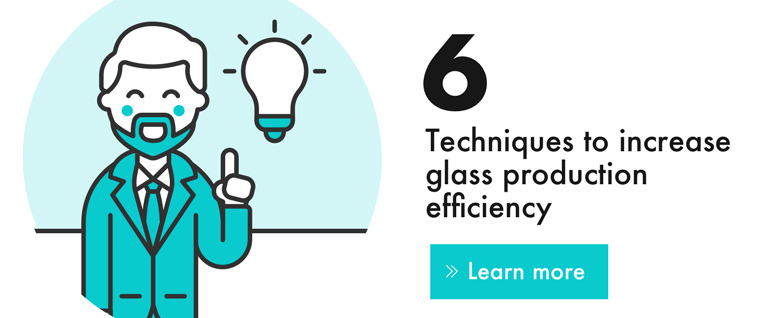Here’s how to fix the time-waste and efficiency challenges that glass production organisations commonly face.
Below we list some of the biggest challenges – and a guide as to how to solve them.
It’s all about helping you delight your customer, whilst ensuring you’re not left behind in relation to your competitors.
1: Lack of clarity about capacity
It is critically important that you know the maximum output capacity you can achieve and that you can consistently deliver this.
To measure this, you can install production management software which includes easy to view monitoring, planning and scheduling. Glass production is a huge scheduling challenge and the right software will balance your product requirements, your resources and your machinery’s production capacity.
2: Not knowing how much glass you’re wasting
If you are unclear about how much glass waste you are making and how you can minimise this, it’s also likely that you will not have the facility to identify the full cost of any incorrect cutting or other production mistakes.
Getting this right is not just about understanding material costs, it also includes being able to track time and labour. On paper this can be a complicated sum. It’s actually three or four times the cost of making the original piece and it includes the cost to make the rejected piece, the cost to make the replacement, the loss of capacity as you’re repeating this work, and even the cost for managing the waste.
Software is available from Jotika such as Duplicate Order Verification, which allows for improved input checking to catch any mistakes at entry point. Customer order return logging and reporting, as well as barcode tracking and internal reject logging and reporting, is crucial to analyse this type of business waste.
Also, OptimiserX Filler Piece technology, from Jotika will ensure that urgent customer remakes or internally flagged rejects are incorporated into production cutting runs seamlessly, with minimum disruption to workflow and material waste levels.
3: Overproduction
Because each glass production run varies so much (thickness, glass type, glass finish) this process can easily be underestimated or include mistakes.
One quite common mistake is overproduction.
To minimise costs, products must be made in the right order and only as they’re needed.
The last thing you want is items created and then sat on an A-frame (and then the confusion and extra work of sorting everything out).
Production software optimises this process flow and links your scheduling to your capacity and output. This stops glass items being made unnecessarily, and therefore, provides greater production fluency and minimises additional handling and internal rejections.
4: Inefficient use of space
It’s always a good idea to cast a fresh eye on how you manage your shop floor, your product storage, your retrieval and your people’s movements.
Although efficiency improvements in these areas may easily be made, they are often not measured.
Once again, effective planning software that directs and tracks your scheduling will drive this. Specifically, Jotika’s item location tracking throughout the factory and loading areas.
Also, when it comes to improving efficiency, for some glass producers, inefficient furnace use can be a key bottleneck limiting output and turnaround. Our Furnace Bed Optimisation software helps you maximise your furnace operation, resulting in both labour and energy savings.
5. Lacking clarity in terms of shipping and delivery
For any supply business, getting the right product to the right customer at the right time, is critically important.
Syncronising delivery route planning and production is key. Using delivery route optimisation and production planning with glass optimisation together, will ensure that each delivery is issued for production at the optimal time. It will also tell you what can be achieved within a timeframe via capacity planning. With this in place, you won’t be making promises you may be unable to keep.
6: Stagnating in terms of moving the business forward
In manufacturing, it’s always important to have an eye on the future and move the business forward.
Are you for example, seeking continuous efficiency improvements or has the business plateaued?
The most realistic way for a business to improve is through step-by-step changes. An example of this may be investing to cut costs whilst maintaining production.
This is where Jotika SQL Dashboard Reporting can make the system data work for you. It enables you to identify/visualise business challenges, then use this data to implement solutions either using software or changing business processes/retraining. You can then use the same data visualisation to monitor the effectiveness of any changes over time.
Furthermore, evaluating and assessing the business and software is something that is supported by Jotika’s experienced team. They review your requirements and provide advice on the latest technology or knowledge of best practices, to help you make better business decisions.
Here for you
Glass production thought leader Jotika supports flat glass manufacturers and sellers globally.
Software for glass
For a personalised online demo or to discuss your individual requirements, please call the Jotika partnership team on 01386 793415 or email – sales@jotika.co.uk

